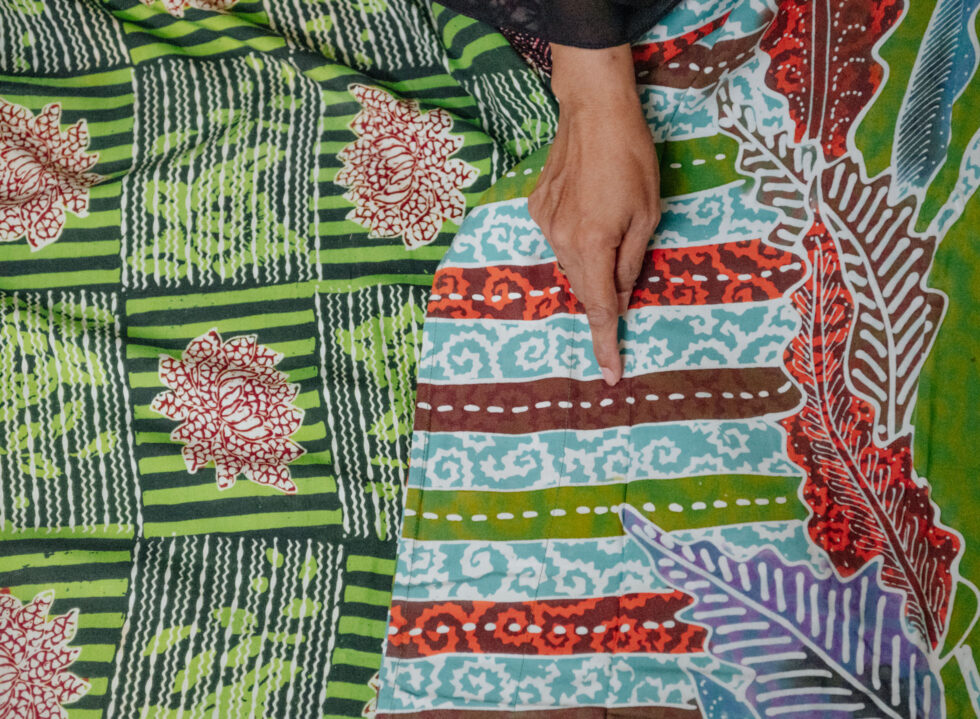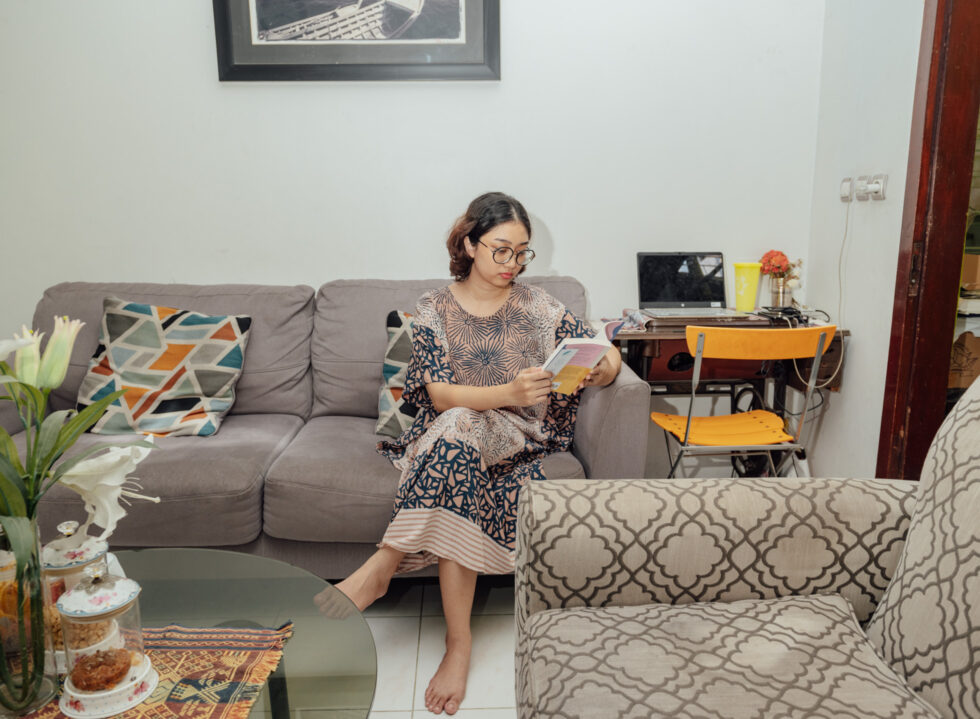The morning light awakens the scene in Bendungan Hilir wet market, casting its streaks upon a crowd of shoppers and stallkeepers trading small change for fresh produce and pantry goods amidst animated chatter.
Hiding beneath the chest-length hijabs and cooking aprons, the unassuming home dress, daster, appears like an unofficial uniform worn by the women in the market, revealing itself through subtle motions caught only by the observant eye. Identifiable by its loose-fit silhouette that was designed to facilitate movement, swirls of floral prints peek through as these women rummage for coins in their dress pockets. In another corner, the pairing of a paisley-printed daster and orange rubber boots stands out, as seen in one of the fish sellers packing up her stall when the market’s rush hour draws to a close.
For Aisah, who has been running a small coffee stall in the market since 1985, the dress feels like an obvious choice for a long day at the market. While most are still in deep slumber, she begins her work at 2 AM every day, draped in her breezy daster as she serves instant coffee to fellow market workers on their break. “Dasters are simple and don’t require much thought. I own more than ten of them, which I wear to work and to bed,” shared the 58-year-old woman wearing a pink batik daster adorned with floral motifs.
The dress’ ability to switch functions in different environments is a feature that Eva Fairus Sungkar, owner of the at-home Pekalongan batik store Omah Zahra in Petamburan, Tanah Abang, also grew to realise. She used to “associate the garb with older women. But one day I decided to try on one of my mother’s dasters after work, and it was surprisingly comfortable,” the 56-year-old shared. She came to love the lightweight quality and the lingering scent of wax that comes especially with batik dasters, which she would sometimes pair with a blazer to wear to the office.
Just as Eva’s affinity for the dress was shaped by being around the store’s batik dasters growing up, her nieces have likewise embraced a certain fondness for the daster. One niece in particular, the 27-year-old Olivia Afina, took a certain shine to it. She tends to gravitate towards “two-tone colour combinations and breezy cuts, suitable for lounging and completing work tasks from home. However, I also have a few nicer ones that resemble casual dresses, which I wear to go out on weekends.” she shared.
Not quite easily defined as a home dress or daywear, daster occupies the in-between space that borders home and outdoors, leisure and work. From the bustle of the market to the sanctuary of home, daster falls gently on tired bodies like an unspoken language of comfort, bearing a glimpse into the lives of the women who wear them through its wrinkle and folds.
For years, daster has been closely linked to domestic scenes and the occasional friendly figure of ibu-ibu (older women) in the market, an image further solidified by its portrayal in popular culture and local sitcoms. But beyond its ability to transition between spaces, daster takes on a new layer of context in the hands of the younger generation, who are continuing to expand its use and meaning through various occasions and environments. And thus, daster continues to slip into new territories with each wear.
























